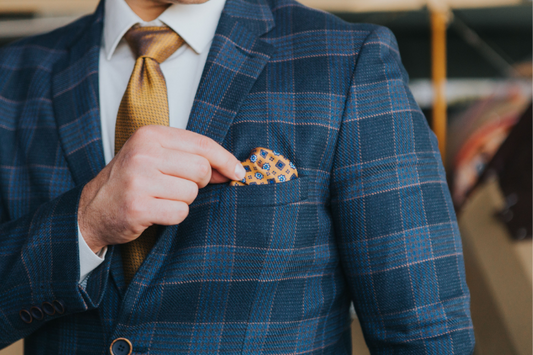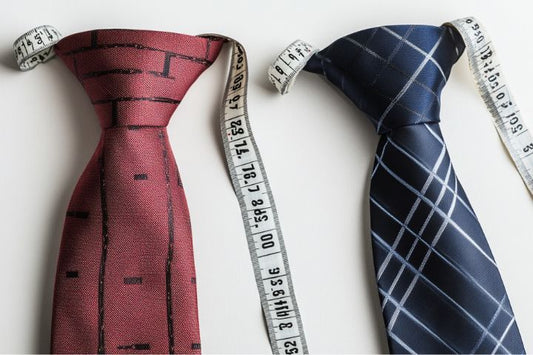In the world of fashion and personal style, the question of whether men’s dress socks should match shoes or trousers is a topic of considerable debate. The answer depends on the occasion, the overall outfit, and the impression you want to make. Choosing the right dress socks for formal events, casual dress socks for work, or patterned socks for stylish outfits can enhance your look. By coordinating men’s dress socks with shoes or pants, you can create a cohesive and polished appearance while expressing personality through color, texture, and subtle patterns. Here's what to think about when buying new socks.
Traditional style rules suggested that socks should be an extension of the trousers, creating a seamless line and elongating the leg. However, modern sartorial norms have relaxed, allowing for more expressive and individualised choices.
When choosing socks, one should consider the formality of the event and the colour palette of their attire.
In a professional or formal setting, it is generally advisable for socks to coordinate with trousers. This creates a cohesive look that is both polished and respectful of traditional dress codes. Contrasting socks might be perceived as a misstep in such environments.
On the other hand, for casual or creative settings, matching socks to shoes can add a deliberate touch of contrast and interest to an ensemble.
The selection also hinges on the type of shoes worn.
For example, with low-cut shoes such as loafers or boat shoes, the visibility of socks is higher, and thus they may warrant more consideration in how they complement the overall outfit.
Conversely, with boots or higher-cut shoes that cover the ankle, the socks are less visible, allowing for more leeway in matching.
Fashion Fundamentals
In determining whether socks should match the shoes or trousers, understanding the basic principles of fashion is crucial. These include etiquette and colour coordination, which are key to making informed style choices.

Sartorial Etiquette
One's choice in socks can reflect their attention to traditional style rules. In classic British sartorial etiquette, socks are an extension of trousers, creating a seamless visual line. Hence, they frequently match the colour of one's trousers rather than their shoes. This approach is especially evident in professional or formal settings where conventional dress codes prevail.
Colour Matching Principles
The principles of colour matching are vital in achieving a cohesive outfit. When considering socks:
Solid Colours: For a foolproof match, choose socks that are identical in colour to the trousers. This can create a continuous line for a cleaner look.
Complementary Colours: Socks can also be a shade lighter or darker than the trousers, staying within the same colour family.
Contrasting Colours: For a bold statement, one may use a contrasting colour that still harmonises with the other elements of the outfit.
To maintain balance, it is essential that the socks do not clash with the overall colour scheme of the attire.
Socks and Shoes Alignment
In selecting socks, one must consider the type of shoe and the activity involved, as this guides the appropriate choice for sock-shoe alignment.
Shoe Type Considerations
Formal shoes demand socks that complement the shoe colour, allowing for a cohesive look. For instance:
Oxford shoes: Dark socks, such as black or navy, often match the shoe colour.
Loafers: Socks can match either the shoe or trouser colour, permitting versatility.
Casual shoes offer more freedom, with bold or contrasting socks adding personality. Examples include:
Sneakers: Brightly coloured or patterned socks can contrast to make a statement.
Boat shoes: Typically worn without socks or with no-show socks that match the skin tone.
Activity-Based Choices
Sports activities necessitate performance socks that match the footwear, prioritising function over fashion:
Running shoes: Technical socks in a similar shade provide a unified aesthetic while offering performance benefits.
Golf shoes: Socks often mirror the shoe's base colour to maintain a professional appearance.
Leisure activities allow for relaxed sock rules and can be matched to either the shoes or pants depending on personal preference:
Walking boots: Thicker, durable socks that match the boot colour help to create a seamless look.
Sandals: Generally worn without socks, but if chosen, one should ensure socks are subtle and close to the sandal colour.

Socks and Trousers Coordination
When coordinating socks with trousers, one must consider the formality of the attire and whether the look is for a formal or casual setting.
Formal Wear Rules
In formal settings, it is traditionally expected that one's socks should complement their trousers, rather than their shoes. This creates a seamless look and elongates the appearance of the legs. For business attire or events that require a suit:
Colour matching: Match the colour of the socks to the colour of the trousers. This means, for navy trousers, choose navy socks.
Patterns and textures: If one opts for patterned socks, they should be subtle and in the same colour family as the trousers to maintain formality.
Casual Style Tips
Casual attire allows for more flexibility and personal expression in coordinating socks and trousers.
Contrasting colours: It's acceptable to wear socks that contrast with the trousers, offering a pop of colour or an interesting visual break.
Bold patterns: One might lean towards bolder patterns or textures that can add personality to an outfit. For example, with charcoal grey jeans, one might wear vibrant red socks or a pattern that includes hues of grey to tie the look together.
Material and Texture
When considering whether socks should match the shoes or trousers, one must not overlook the importance of material and texture. These attributes significantly affect the visual harmony and practicality of an outfit.
Fabrics and Weaves
The fabric of socks plays a crucial role in determining their compatibility with shoes or trousers.
Cotton is breathable and often used for everyday wear, while wool socks offer warmth and are ideal for colder climates.
Finer materials like silk and cashmere convey a more formal appearance and may align better with dress shoes and smart trousers.
Cotton:Breathability: High
Best Paired with: Casual shoes, jeans
Wool:Warmth: High
Best Paired with: Boots, winter trousers
Silk:Sheen: High
Best Paired with: Formal shoes, suit trousers
Cashmere:Softness: High
Best Paired with: Dress shoes, tailored trousers
Seasonal Adaptations
Changes in weather necessitate different material choices to ensure comfort and appropriacy.
Summer might call for thinner, lighter fabrics like linen or bamboo, which are optimal for ventilation.
On the contrary, winter demands thicker, insulated fabrics, such as heavy wool or thermal synthetics, which pair well with robust boots and heavy denims or tweeds.
Summer Fabrics:Linen: Lightweight, cool
Bamboo: Moisture-wicking, soft
Winter Fabrics:Heavy Wool: Insulating, durable
Thermal Synthetics: Heat-retentive, moisture-resistant
Pattern and Design
When considering whether socks should match shoes or trousers, the selection of pattern and design is a pivotal consideration.
Solid Colours vs Patterns
Solid colours often offer a seamless transition between shoe and trouser, making them a safe choice for formal attire.
Black socks are classic and versatile, working well with most shoe and trouser combinations.
Navy or grey socks can complement similarly coloured trousers, creating a coordinated look.
With patterns, the wearer can introduce contrast or complement existing elements of their attire.
Stripes and checks can add subtle variation without overwhelming an outfit.
Subdued patterns may pair with busier trousers or, conversely, plain trousers can balance out bolder sock designs.
Statement Socks
Statement socks have become a means for individuals to express personality through their wardrobe.
Vivid colours and unique patterns distinguish them from more conventional options.
They often serve as a focal point and can clash if not considered with the overarching theme of the outfit.
When choosing statement socks,
Ensuring harmony with at least one element of the attire is key—either the shoe or trouser colour.
They are best reserved for casual or creative environments, as they may be deemed too informal in traditional settings.





